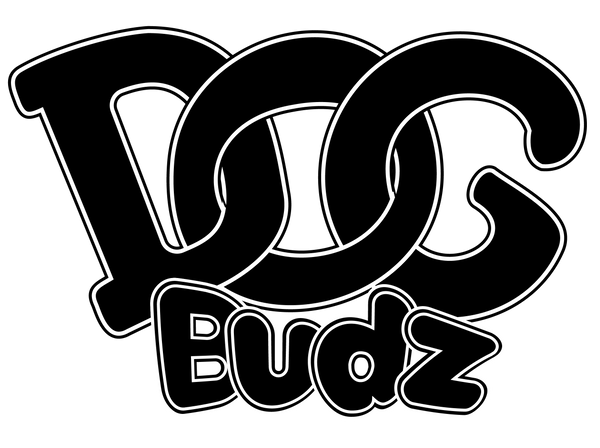Building a Routine for Your Australian Shepherd: Structure for a Balanced, Happy Dog

Australian Shepherds are intelligent, high-energy dogs that thrive on structure. As natural herders, they excel when they have clear expectations, a sense of purpose, and consistent activities to engage their bodies and minds. Creating a daily routine tailored to your Aussie’s needs can improve their overall well-being and make life smoother for you, too.
Why Structure Matters for Australian Shepherds
Routine provides predictability, which is especially beneficial for dogs as energetic and intelligent as Aussies. It helps reduce anxiety, prevents boredom-related behaviors, and fosters a sense of stability. Whether it’s knowing when meals are served, when it’s time to exercise, or when to relax, a structured day helps your Aussie feel secure and fulfilled.
The Key Elements of a Balanced Routine
To create an effective routine for your Australian Shepherd, focus on these four pillars: physical exercise, mental stimulation, mealtime consistency, and downtime.
- Physical Exercise: Channeling Their Energy
Australian Shepherds are high-energy dogs that require significant daily exercise. Without proper outlets, their pent-up energy can lead to destructive behaviors.
- Morning Movement: Start the day with a brisk walk, jog, or play session. Aim for at least 30-60 minutes to burn off energy and set a positive tone for the day. Activities like fetch or frisbee are great options that align with their herding instincts. Chuckit! Ultra Ball, Medium (2.5 Inch), 2 Count – DogBudz

- Midday Breaks: If you’re home during the day, a quick game of tug or a short walk can help break up their downtime. Diego knows it's time for that walk and he sits beside me waiting for me to get up.
- Evening Activities: An evening walk or a session of agility or obedience training provides a productive way to wind down their day.
- Mental Stimulation: Keep Their Minds Sharp
Australian Shepherds need more than just physical activity; their sharp minds crave challenges. Integrate mental stimulation into their routine with interactive toys, training sessions, or problem-solving games.
- Puzzle Toys: Toys like treat dispensers or puzzles can keep them busy and mentally engaged. Rotate these toys regularly to maintain interest.
- Training: Dedicate 10-15 minutes a day to teaching new commands or tricks. Aussies love learning, and these sessions double as bonding time.
- Interactive Games: Try hide-and-seek or scent games to engage their natural intelligence and sense of smell. That is Diego's favorite, after 20 minutes is tired. Than we go for our last walk of the day.
- Consistent Mealtimes
Regular mealtimes are crucial for maintaining your dog’s health and digestive routine. Feed your Aussie at the same times every day, typically morning and evening, with balanced meals that meet their nutritional needs. Avoid feeding too close to exercise to prevent digestive issues like bloat, which some active breeds can be prone to.
- Downtime: Teach Them to Relax
Aussies are known for their enthusiasm, but even they need rest. Structured downtime helps prevent overstimulation.
- Calm Activities: Offer a quiet space with a comfy bed or crate where they can relax. Add a chew toy or calming music to create a soothing environment. While I am in my office, Diego understands that it's downtime and he would usually just sleep beside me or in the same room as me.
- Evening Relaxation: After dinner, engage in lower-energy activities like grooming or cuddling to signal that it’s time to wind down. Diego, understand that after eating, it's relaxing mode, and when I am done with my dinner, than it's play time, and he is ready and shows it.
Adapting the Routine for Your Aussie
While structure is vital, flexibility is just as important. Life happens—unexpected errands, guests, or changes in schedule are inevitable. When changes occur, maintain a core routine, like consistent meal and exercise times, to keep your dog feeling secure.
If your schedule varies during the week, try using weekends to build in longer play sessions, hikes, or other enriching activities that can make up for busier weekdays.
Benefits of a Structured Routine
- Improved Behavior: A well-exercised and mentally stimulated Aussie is less likely to engage in behaviors like chewing, barking, or digging.
- Reduced Anxiety: Predictability lowers stress and helps your dog adapt to changes more smoothly.
- Stronger Bond: Spending regular, focused time with your dog strengthens your connection and builds trust.
Sample Daily Routine for an Australian Shepherd
Here’s a sample routine to get you started:
- 6:30 AM: Morning walk or jog (30-60 minutes)
- 7:30 AM: Breakfast and water
- 10:00 AM: Puzzle toy or short training session
- 12:00 PM: Midday walk or playtime (15-30 minutes)
- 1:00 PM: Quiet time or nap
- 4:00 PM: Interactive game or mental stimulation activity
- 6:00 PM: Evening walk or training session (30-60 minutes)
- 7:00 PM: Dinner and water
- 8:00 PM: Relaxation time with family (grooming or cuddles)
This time line can be adapted to your needs and your dog's need. Play time, training time can be on a later time or during your walks, but the key here is to be consistent, trust me, your fur baby will appreciate it, and you will also.
Final Thoughts
A structured routine for your Australian Shepherd is the foundation for a happy, balanced life. By meeting their physical, mental, and emotional needs through consistent activities, you’ll create a fulfilling environment for your Aussie—and strengthen your bond in the process. Remember, each dog is unique, so adapt the routine to fit their personality and energy level. With time, you’ll find a rhythm that works for both of you!

